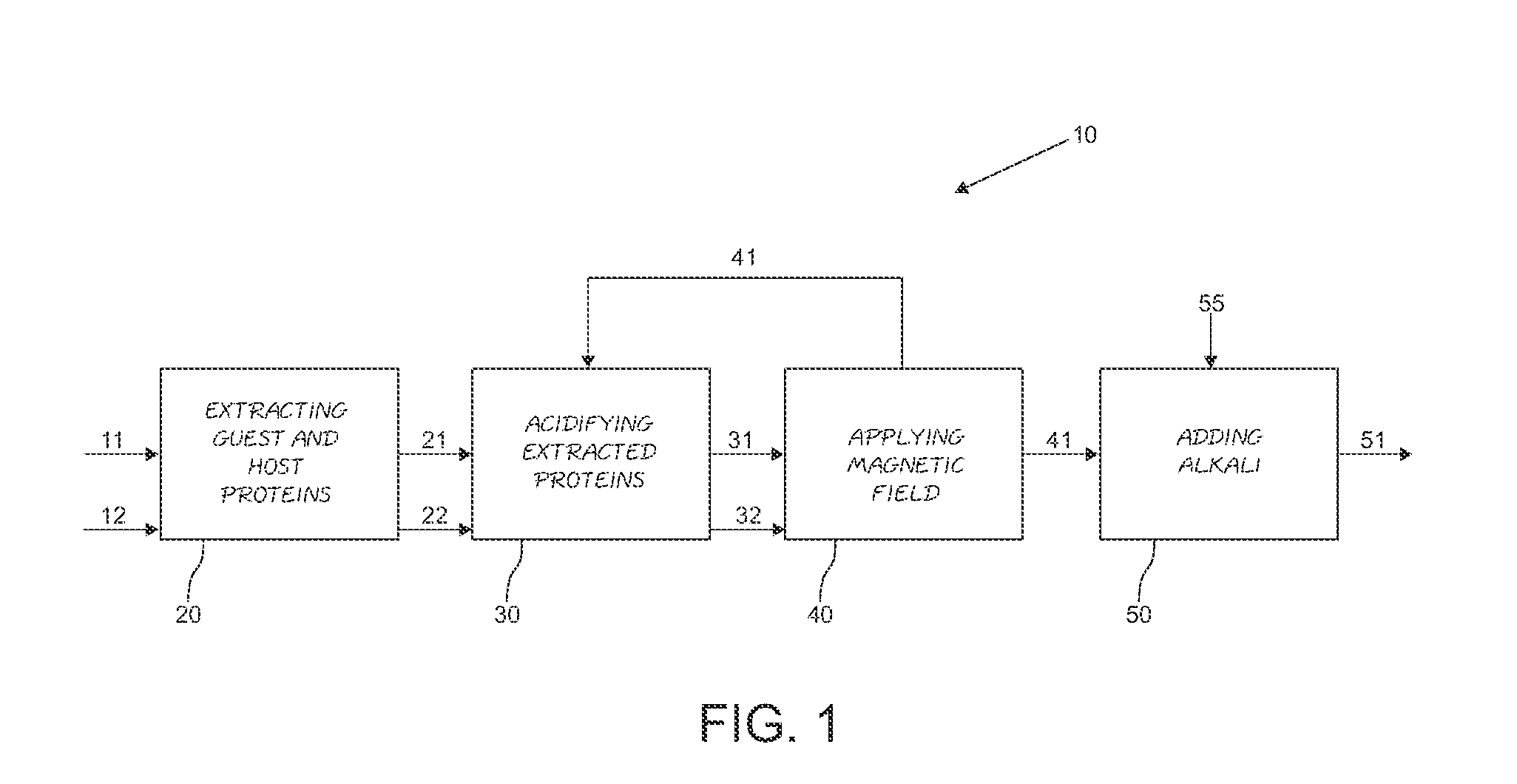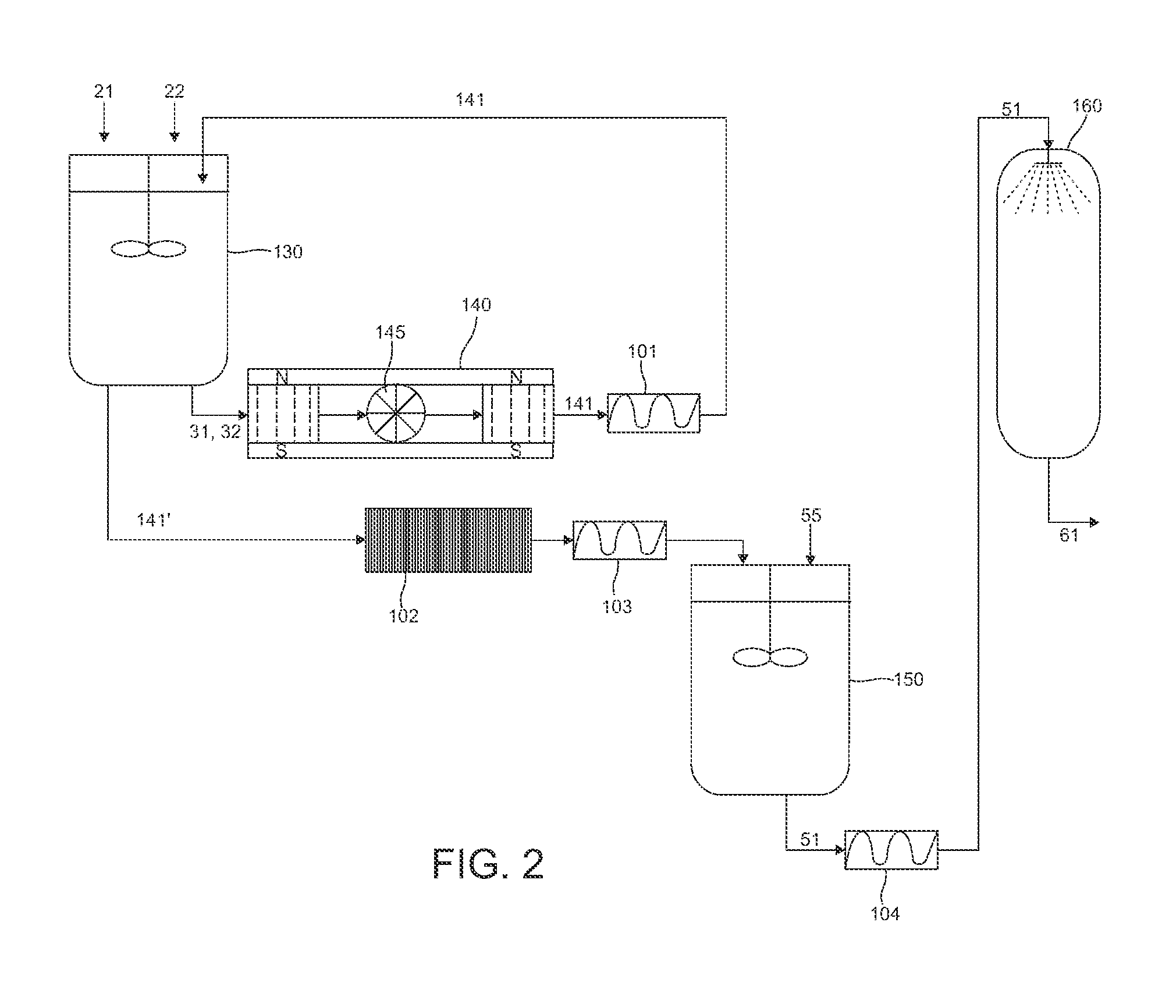Hybrid vegetable protein and method for obtaining same
a vegetable protein and hybrid technology, applied in the field of hybrid vegetable protein and method for obtaining same, can solve the problems of degrading the obtained protein, increasing the cost of the produced product in the patent, and inconvenience of the cost of the said procedur
- Summary
- Abstract
- Description
- Claims
- Application Information
AI Technical Summary
Problems solved by technology
Method used
Image
Examples
example 1
Hybrid Vegetable Protein Obtaining Using Corn Germ and Soy Protein
[0039]3 kg of corn germ and 1 kg of soy protein were used, soaked for at least 3 hours at 45° C., using 3 liters of water per each kg of dry matter; then sulfuric acid (H2SO4) was added to acidify the guest and host proteins up to the required pH; immediately after, the grinding was carried out at the same time that the magnetic field was applied, recirculating to the acidification step all protein subjected to the magnetic field; then, the hybrid vegetable protein was passed through a filter press wherein all the grain was removed; the liquid was transferred to another vessel wherein the product was neutralized with calcium hydroxide (Ca(OH)2); the waste materials were removed by decantation; then spray-drying was carried out at a drying temperature of between 140° and 180° C.; finally, the product was dry packaged.
[0040]Table 4 shows the comparative results between the PDCAAS rating obtained for protein sources, and...
PUM
| Property | Measurement | Unit |
|---|---|---|
| temperature | aaaaa | aaaaa |
| temperature | aaaaa | aaaaa |
| magnetic field | aaaaa | aaaaa |
Abstract
Description
Claims
Application Information
 Login to View More
Login to View More - R&D
- Intellectual Property
- Life Sciences
- Materials
- Tech Scout
- Unparalleled Data Quality
- Higher Quality Content
- 60% Fewer Hallucinations
Browse by: Latest US Patents, China's latest patents, Technical Efficacy Thesaurus, Application Domain, Technology Topic, Popular Technical Reports.
© 2025 PatSnap. All rights reserved.Legal|Privacy policy|Modern Slavery Act Transparency Statement|Sitemap|About US| Contact US: help@patsnap.com



